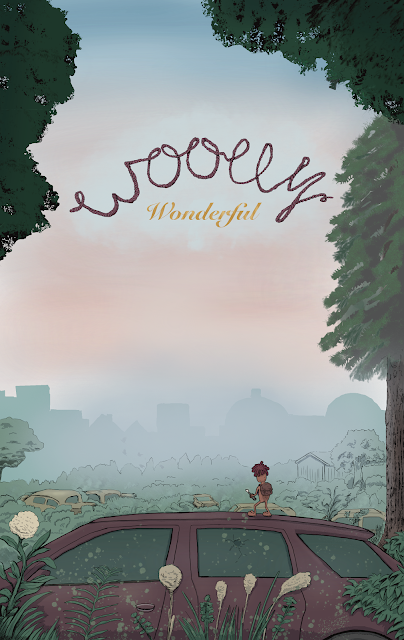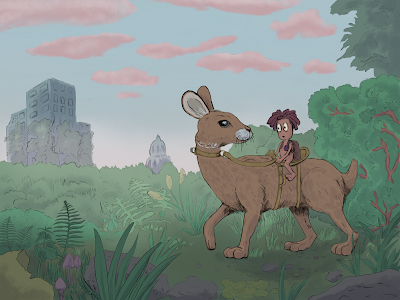Process of a comic page in Woolly Wonderful
People who are not familiar with the artistic process might perceive the creation of art I as some sort of magical act. That we artists just make some confident marks from our imagination and *bam* the masterpiece is done. And even for me, now that I have finished issue 1 of my comic, it seems unbelievably far away and odd when I laid down my first sketches.
That notion might even be strengthened when watching artists like Kim Jung Gi who created huge masterworks in ink, straight from their mind onto paper. Of course they are not magicians, even if it seems so. They just trained long enough. They have drawn many subjects over and over again until they don’t need references or guiding lines any more.
 |
| Rough pencils. Woolly sitting in the Dad room reading. |
 |
| Final page without dialogue. |
Second last (before lettering) is the colouring step. Just slap a bit colour on it. Done! No, it’s not that easy. There is an almost endless list of styles you could apply and within them different passes including flattening, shadow and light passes, textures, effects and colour adjustments. That’s a topic for another post.
So when you are a beginner artist, don’t be discouraged. Getting to your masterpiece requires a few rounds on the same subject, every round closer to the end result. The joy in the end comes from seeing what you made when there was nothing before, and the enlightenment when you go back and look at the initial scribbles from phase one. And realise how far you’ve come.
Stay curious,
Andi Pasti





Comments
Post a Comment